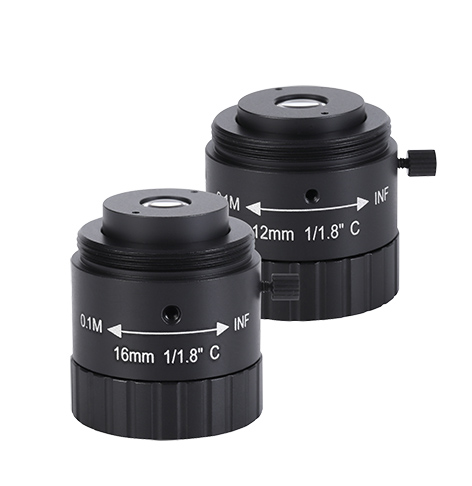High definition FA industrial lenses increase production efficiency
High-Definition Industrial Lenses: A Tool to Enhance Production Efficiency

In the era of smart manufacturing,
High definition FA industrial lenses, as the core components of machine vision systems, directly impact the efficiency and precision of entire production systems. With the deepening of Industry 4.0, high-definition industrial lenses are becoming indispensable tools in modern manufacturing. From the inspection of precision electronic components to the measurement of automotive parts, from quality control in food packaging to process monitoring in pharmaceutical production, high-definition industrial lenses are revolutionizing industrial production with their exceptional imaging quality and stable performance. This transformation is not only reflected in the improvement of product quality but also profoundly changes the production models and management methods of traditional manufacturing.
1. Technological Breakthroughs in High-Definition Industrial Lenses
Breakthroughs in optical material technology have laid the foundation for the development of high-definition industrial lenses. New optical glass materials with higher refractive indices and lower dispersion coefficients effectively address issues such as chromatic aberration and distortion in traditional lenses. The application of nano-level coating technology has increased the lens transmittance to over 99%, significantly enhancing imaging clarity and contrast.
In terms of structural design, high-definition industrial lenses employ a combination of aspherical lenses and ultra-low dispersion lenses. This design not only reduces the size of the lens but also greatly improves imaging quality. Through computer-aided design and simulation optimization, the optical performance of the lenses has been significantly enhanced, with resolutions reaching over 20 megapixels, meeting the most stringent industrial inspection requirements.
Breakthroughs in autofocus and zoom technology enable high-definition industrial lenses to adapt to more complex industrial environments. Intelligent focusing systems can achieve precise focus within 0.1 seconds, and the zoom range covers various application scenarios from wide-angle to telephoto. These technological innovations have greatly expanded the application scope of industrial lenses.
2. Specific Applications of High-Definition Industrial Lenses in Enhancing Production Efficiency
In automated production lines, high-definition industrial lenses play a crucial role. Through high-speed image capture and processing, real-time monitoring and quality inspection of production processes are achieved. In the automotive manufacturing sector, high-definition industrial lenses can simultaneously inspect the quality of hundreds of weld points, with inspection speeds reaching hundreds of pieces per minute and precision up to 0.01mm.
In the field of precision manufacturing, the application of high-definition industrial lenses is even more extensive. In semiconductor manufacturing, they enable the detection of nanometer-level defects on wafer surfaces; in precision machining, they facilitate three-dimensional measurements of micron-level components. These applications not only improve inspection accuracy but also reduce inspection time by over 70%.
In quality inspection, the advantages of high-definition industrial lenses are even more pronounced. Combined with deep learning algorithms, they enable automatic identification and classification of complex defects. In electronic product inspection, multiple quality indicators can be inspected simultaneously, with accuracy rates exceeding 99.9%, far surpassing manual inspection levels.
3. Production Transformations Brought by High-Definition
FA Industrial Lenses
The application of high-definition industrial lenses has significantly enhanced the intelligence level of production lines. Through integration with industrial robots and automated equipment, comprehensive digitization and intelligence of production processes are achieved. In the practice of a large manufacturing enterprise, the introduction of high-definition industrial lenses increased production line efficiency by 40% and reduced product defect rates by 80%.
In quality control, high-definition industrial lenses have enabled a shift from sampling inspection to full inspection. By real-time collection and analysis of massive production data, a robust quality traceability system has been established. This not only improves product quality but also provides data support for process improvement.
The application of high-definition industrial lenses has also driven innovation in production models. Flexible manufacturing systems can automatically adjust production parameters based on real-time inspection results, enabling personalized custom production. This model ensures product quality while meeting diverse market demands.
The application of high-definition industrial lenses is reshaping the landscape of modern manufacturing. They are not just inspection tools but also a vital force driving the transformation and upgrading of manufacturing. With continuous technological advancements, high-definition industrial lenses will play a role in broader fields, bringing more possibilities to manufacturing. In the future, with the deep integration of artificial intelligence and 5G technology, high-definition industrial lenses will open a new chapter in smart manufacturing, propelling the industry towards greater efficiency and intelligence. In this process, high-definition industrial lenses will continue to play a key role, providing strong support for enhancing production efficiency and product quality.
